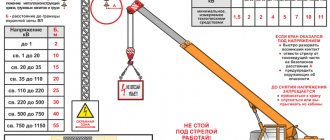High rental rates force managers to “compact” employees, optimizing the use of work space. “Dense packaging” like “herring in a barrel” does not add efficiency and optimism to work and often causes a decrease in ability to work and motivation to work.
Let's start with the definition:
A workplace is an area of work for one or more performers, equipped with everything necessary to complete production tasks.
Each workplace must be organized in accordance with modern technological, ergonomic, organizational, economic and social requirements. The highest organizational and economic level, novelty of technological equipment, progressiveness of layouts and service systems are distinguished by jobs created according to standard projects. In addition, standard workplaces are the most profitable in terms of organization costs. See also: 5 s workplace organization system.
The organization of workplaces, aimed generally at increasing the productivity of each employee, involves:
- expedient layout of workplaces, ensuring the use of rational methods and techniques of work;
- comfortable and safe working conditions;
- equipping the workplace with tools and objects of labor;
- rational, efficient service.
A “poorly organized workplace” is not only an additional cost factor for the employer, but also the risk of accidents and occupational diseases. For engineering, technical and administrative workers, this is also fraught with the emergence of office syndrome, which includes disorders in various human organs and systems due to the influence of various environmental factors in the work environment. For example, insufficient lighting or harmful noise lead to an increase in the number of errors, a decrease in work results and their quality, and an increase in deadlines for completing tasks. And prolonged sitting at the computer leads to muscle tension and disruption of the blood circulation cycle, and, as a result, forms chronic diseases.
Basic light requirements
Each light source emits a luminous flux. This statement is equally true for the sun and for the lamp. The larger the light beam, the better the area where it is directed is illuminated. The unit of illumination is Lux.
Since an adult spends most of his life at work, the illumination of the workplace greatly affects his health. Some types of production have strict requirements for room lighting.
Optimal brightness is an indicator that determines the level of lighting necessary to prevent your eyes from getting tired quickly.
The entire surface where the gaze is directed should be evenly illuminated. That is, without shadows, which are most often formed from an insufficient amount of light emitted by ceiling lamps. To solve this problem, you need to add the number of lamps.
What documents regulate lighting
There are only 2 documents regulating the lighting procedure: SNiP and SanPiN. The first regulates the level of illumination during the construction stage. In accordance with this document, the number and size of windows in the room are determined, as well as the placement of artificial light sources.
The requirements for workplace lighting set out in regulatory documents may vary greatly depending on the type of production. The construction of buildings is carried out in accordance with GOST, which also takes into account lighting standards.
The second document applies to already constructed buildings. It defines lighting standards for residential buildings and institutions. Based on the standards approved therein, inspections are carried out by sanitary inspectors and safety engineers.
The standards are revised from time to time due to the emergence of new types of light sources.
Interesting video on the topic:
Main types of workplace lighting
When organizing work activity and optimizing conditions for its normal implementation, workplace lighting is divided into the following types:
By type of light source:
1) Artificial lighting of the workplace. It is created using artificial sources: lamps, lighting installations, spotlights, etc.
2) Natural lighting of the workplace. This view is formed only by natural light entering the room through the openings.
3) Combined or mixed - carried out when there is insufficient natural lighting of the workplace by adding artificial sources.
A comparative assessment of these types of lighting, in terms of their impact on work ability, showed a significant advantage of natural light sources over artificial ones. Therefore, if it is possible to organize illumination of the workplace with a predominance of natural light, then this opportunity should not be missed.
What should be the lighting level in the workplace?
There are special requirements for lighting at the place of work that differ from those for living rooms.
First of all, lighting in production should be bright enough so that workers do not have to strain their eyes to carry out the work process.
There are some activities that require good lighting. For example, watch production, where you have to work with the smallest details. Objects in the office where employees work should always be well and evenly lit, because... Many objects are capable of reflecting light from their surfaces.
For example, employee offices should have lighting of 250–300 lux. Reading rooms in libraries - 300–500 lux. Office rooms - 300 to 500 lux.
Workplace lighting - definition and impact on people
Illumination is understood as a luminous value equal to the ratio of the light flux incident on a certain area of the surface to the area of this area.
Properly organized lighting is especially important for production facilities, offices, warehouses, and workshops. Excessive and insufficient light availability has a negative effect on employees.
According to regulations, in buildings and in production, the distribution of light must be optimal for effective performance of duties.
The efficiency of workers depends on proper lighting, because light affects all components of this indicator:
- energy, endurance, performance;
- work motivation;
- health, good physical well-being.
With a lack of light, people's vision will inevitably decline, chronic overwork and fatigue will occur, and they will lose interest in the results of their work. With too much light, the eyes also get tired and dizziness occurs, especially when subsequently entering a room with less bright lamps. The result is irritability, bad mood, decreased performance, and inattentiveness of employees.
The need to measure illumination
According to hygienic standards, the main indicator of illumination of a space is measured in lux (Lx). In some standards, the unit of measurement is Lumen/square meter of area, which is essentially equal to lux.
Why is artificial lighting measured? For example, office workers who work at a computer every day have a constantly increased visual load. If the light in the office is uneven and falls on the table from the wrong direction, health problems will arise. According to standards, the luminous flux on a PC table must be 300-500 Lux. Carrying out the necessary measurements will allow you to quickly identify deviations in lighting.
How is illumination measured?
Calculation of the illumination norm is carried out in lux (lx). Lux is 1 lumen per m², therefore, in the developed rules, the standard of illumination in industrial premises is presented in this unit of measurement.
For example, many employees use PCs when performing their professional duties. A room that is not properly equipped with lighting devices may experience:
- drop in visual acuity;
- eye fatigue;
- itching and dry eyes;
- general psycho-emotional irritation;
- pathological phenomena in the nervous system (for example, the appearance of insomnia).
Following the rules will help you avoid all this:
- in an office equipped with computers, uniform lighting is necessary;
- the light from the window should fall on the worker’s workplace from the left side;
- on the employee’s desk, the luminous flux should be from 300 to 500 lux.
What are the requirements for lighting rooms with PCs from artificial sources? They have to:
- do not create glare on the monitor screen;
- give a light flux not lower than the specified norm of 300 lux;
- their level of gloss should tend to zero. To do this, it is necessary to correctly position the lamps relative to the working surface;
- The brightness of the elements included in the lighting fixtures should not exceed the limit of 200 cd/m².
By following the above requirements, you can create good conditions for working on a PC without harming your eyes. The calculation is made based on determining the actual illumination of the work area with available lamps. In this case, the actual illumination is compared with its standard value.
Light control
To regulate this issue, building codes and regulations (SNiP) are used - a set of documents that contains all the necessary data and includes four parts:
- general provisions;
- design standards;
- rules of conduct and acceptance;
- estimate rules and regulations.
There are also a number of epidemiological documents - SanPiN, which also regulate the issue of types of lighting, standards and basic requirements for organizing the workplace. SanPiN requirements are also taken into account when developing SNiP and technical documentation. SanPiN applies to both existing industrial and office premises, as well as those being designed or under construction.
Documents on workplace lighting
What lighting should be like in the workplace is reflected by SNiP 05/23/95. There are all the requirements for lighting: natural, artificial. The federal document must be taken into account for old, newly created jobs when redeveloping them.
Another regulatory document on lighting is SanPiN 2.2.4.3359-16. Here are the basic hygiene requirements for business entities. The legislative act also contains requirements for light sources in schools and kindergartens, because the health of schoolchildren and young children depends on lighting.
Various industry standards have also been developed, but they all take into account the provisions of the above documents. Some enterprises additionally use the European Union standard EN 12464, which provides for the use of slightly more intense light fluxes.
Lighting requirements for rooms with a computer
Increased demands are placed on the lighting of offices with computer equipment. It is an undeniable fact that when working on a computer, the eyes experience increased strain and quickly tire. With the help of proper lighting, it becomes possible to slightly reduce the harmful effects of the monitor on the organs of vision.
Such rooms have 2 types of lighting at once: natural and artificial. Moreover, the first type should prevail. According to the regulations, it is prohibited to install computer equipment in basements and semi-basements.
The area of the computer space must be at least 6 m². An important factor influencing the illumination of rooms is the decoration of the walls.
Standards for industrial premises
Production is a complex structure with a large number of premises for different purposes. Lighting is an important factor that affects the quality of work. The amount of light in premises intended for production is determined by sanitary standards.
Lighting must match the visual effort during work. The luminous flux must be:
- constant throughout the working day;
- directed;
- have color rendition.
There can be no shadows on the desk in the office. The luminous flux must be evenly distributed throughout the room, in addition, it must not be reflected from the surface, be harmless, fire and electrical safe.
Lighting devices must work reliably and be extremely easy to use.
Production workshops are illuminated using a combined method. This means that the workplace has both artificial and natural lighting. In exceptional cases, only artificial light may be present in the workplace. However, control over such special zones is increased.
We recommend videos on the topic:
FAQ
Basically, all questions about lighting are related to working on a computer, since these devices are available in almost any home. Therefore, many people are interested in how to properly organize their workplace so that health problems do not arise in the future.
In what units is workplace illumination measured?
The unit of illumination is lux. Some documents mention Lumen/m². The value is set directly at production. Measuring this indicator in production is an important process that allows you to monitor how much local illumination complies with the standards established by SanPiN.
How to measure the amount of light
The device for measuring illumination received its name from the unit of light (lux), it is called a lux meter. This is a small-sized mobile device for measuring luminous flux, which operates on the same principles as a photometer.
The luminous flux hitting the photocells becomes a conductor and passes electric current. The current value is directly proportional to the illumination of the photocell. This result is displayed on the device. In these devices, the scale is marked in lux, the result is shown by a deflected arrow. All measurements are made with digital instruments.
It should be taken into account that LED lamps are now actively used, which during operation emit a large amount of heat, therefore, in addition to measuring the light level, the amount of heat generated is also determined. To measure the illumination beam, instruments with a high level of accuracy are used, so the error in them is minimal.
View this post on Instagram
Posted by Vyachesl Strizhenko (@strizhenkoviachesl) Apr 12, 2019 at 2:44 PDT
What to do in low light
The problem of insufficient lighting is easily solved. It is enough to install additional sources of light flux or screw in more powerful light bulbs. If necessary, change the color of the walls in the office.
Comfortable and safe working conditions
De jure (for show)
Working conditions are regulated by the norms and requirements set out in the Labor Code of the Russian Federation (LC) (Chapter 34) and SanPiN. According to Order of the Ministry of Labor and Social Protection of the Russian Federation dated December 12, 2012 N 590n and the regulations described in the Appendix to this document, office workers must have working conditions that are adequate to all Labor Code standards and the level of modern technologies. Moreover, today people use personal computers (including mobile computing devices) both in production offices and directly in production facilities.
De facto (for business)
The condition and configuration of workplaces must be brought into compliance with the required standards of working conditions, and then the worker will have a safe “space-time capsule” to perform his duties. In production, the law obliges to monitor working conditions, and in the office, workplace organization standards are often ignored, most often for economic reasons. When preparing office space for work, you should rely on the basic parameters of working conditions and their meanings.
So, the healthiest light for humans is natural daylight . The depth of office premises should not exceed 6 meters from the window; it is better to use glass partitions that provide good sound insulation without preventing the penetration of natural light. In addition, it is necessary to regularly wash office windows: dust settled on the glass reduces light transmission by up to 30% within a month.
Illumination of the workplace - at least 300 lux (Lux - 1 Lumen per sq. m). Luminous flux (measured in Lumens) is always indicated in the lamp characteristics. A rough estimate (without taking into account scattering, reflection and natural sources) of room illumination can be obtained by dividing the total luminous flux of all lamps by the area of the room.
You can estimate the illumination, for example, using a camera: take a sheet of ordinary white paper, place it perpendicular to the incident light in the place where you want to measure the illumination. The sheet should occupy almost the entire frame. Set the camera's sensitivity to 100 units and the aperture to 4, and use these values to determine the shutter speed. The denominator of the shutter speed must be multiplied by 10. This will be the illumination of the place in lux. For example, the shutter time is 1/30 second. Then the illumination is 300 lux.
Color rendering is measured by the index (Ra) or CRI (color rendering index). This is a relative value that shows how well other colors are visible in the light of a given source: for example, in blue light blue colors will be less visible. Sunlight is taken as the standard (100 Ra), while incandescent lamps have the best color rendering index - about 97-99 Ra. Comfortable color rendering for humans is 80–100 Ra.
Color temperature (unit: Kelvin, K).
The color temperature of a light source is determined by comparison with the so-called “black body”. An incandescent lamp with warm white light, for example, has a color temperature of 2700 K, and a fluorescent lamp with daylight color has a color temperature of 6000 K.
Light control. Standard fluorescent lamps use cheap ballasts (ballasts), but it is advisable to use electronic ballasts (EPG). The advantages of electronic ballasts include quick ignition of lamps, the absence of a buzzing sound from the throttle, a filter that removes flicker, and also more economical operation of lamps.
The T8 fluorescent lamps used in most office environments today come in at least six models, each designed for specific operating conditions. Therefore, it is important to select a specific lamp according to the characteristics and recommendations from the manufacturer.
The marking of fluorescent lamps usually contains 3 digits, the first characterizing the color rendering index 1×10 Ra. The second and third numbers indicate the color temperature of the lamp. For example, the most common 640 lamps are lamps with poor color rendering 6*10 = 60 Ra and color temperature 40*100 = 4000K. In offices it is preferable to use 840 lamps.
Solving ergonomic1 problems when organizing a workplace in order to ensure comfortable and safe working conditions requires compliance with the following requirements.
Thus, the permissible noise level, which does not harm hearing even with prolonged exposure to the hearing aid, should be 55 decibels (dB) during the daytime and 40 dB at night. The normal noise level in megacities today is significantly exceeded. For example,
- conversational speech - 45-60 dB, depending on the volume of voices;
- automotive - up to 120 dB;
- heavy traffic noise - up to 80 dB;
- operating noise of office equipment, vacuum cleaner - up to 80 dB;
- noise of a running motorcycle, train - 90 dB;
- noise of repair work - up to 100 dB;
- cooking on the stove - 40 dB;
- forest noise from 10 to 24 dB;
You can measure the noise level using appropriate applications (both paid and free) for smartphones.
The height of the working surface (table) should be selected for each worker at elbow level or just below it, which reduces fatigue and load on the shoulder girdle. This “elbow rule” applies to both sitting and standing work. When working with the keyboard, the height at which your fingers should be should be slightly below elbow level.
Therefore, it is advisable to equip the office with height-adjustable desks.
Arranging furniture and laying communications are no less important for organizing the workspace. In an office, it is important to ergonomically plan the arrangement of furniture and the location of communication ports (sockets) so that wires do not stretch through the active work area and, at the same time, it is convenient to approach all devices for maintenance.
Often in offices there is a continuous migration of employees along with their “spatial capsule”, which takes up time and makes work difficult. By optimizing the space and standardizing the equipment of workplaces, it is possible to ensure that any employee can be at any workplace without the need to move furniture and equipment, if this does not harm the specifics of the work. We are, of course, not talking about managers and key business figures, although these are quite mobile today.










